After watching the underground documentary The Gate of Heavenly Peace, directed by Carma Hinton and Richard Gordo, about the 1989 Tiananmen Square massacre, his life was never the same and he decided to make and share his art in protest. Thus began the engaged artistic activity of Badiucao, a young artist born in China in 1986, raised in Shanghai, and currently living and working in Australia. The idea of moving to Australia, however, was motivated by the fact that in China, if one conveys art or thought in sharp opposition to the authorities, censorship is triggered, with harsh crackdowns on human rights defenders and people considered dissidents. It is nothing new that the People’s Republic of China aims to crush all forms of freedom of expression and any action that, in its view, seeks to subvert the powers of the state. According to Amnesty International, during 2020, “human rights defenders and activists were targeted and charged with vaguely and broadly worded offenses, such as ’subverting state power,’ ’inciting subversion of state power,’ and ’attacking trouble and provoking trouble.’” And as for freedom of expression, censorship has also come down on the Internet, particularly on statements related to Covid-19 and lockdown measures. “Online posts of dissent, hashtags with sensitive terms regarding the pandemic and calls for free speech were quickly removed,” Amnesty International writes. “Notices were leaked in which authorities ordered people accused of ’spreading rumors’ to delete their social media accounts and posts.”
Badiucao was a law student at East China University when he came across the documentary that chronicled the June 4, 1989, massacre that the Chinese military carried out by opening fire with tanks against demonstrators at a series of mass popular demonstrations, carried out mainly by students and workers, that took place in Beijing’s Tiananmen Square between April and June 1989. They demanded more democratic reforms from the government, more political and press freedoms, and economic reforms that would improve citizens’ lifestyles. A symbol of the protest that has remained famous to this day is the so-called Tank Man, an unarmed boy who stood firmly in front of the Chinese army tanks the day after the massacre to keep them from passing. A figure who went around the world through film footage and photographs. Watching the documentary provoked Badiucao’s decision to abandon his studies and put himself on the front lines to fight any form of ideological and moral control carried out by political power and to do so through art, which he considers a powerful means against authoritarianism. His family has artistic traditions: his grandfather and uncle were pioneers of Chinese cinema in the 1930s and 1940s; both lost their lives in the anti-intellectual persecutions of the Cultural Revolution years.
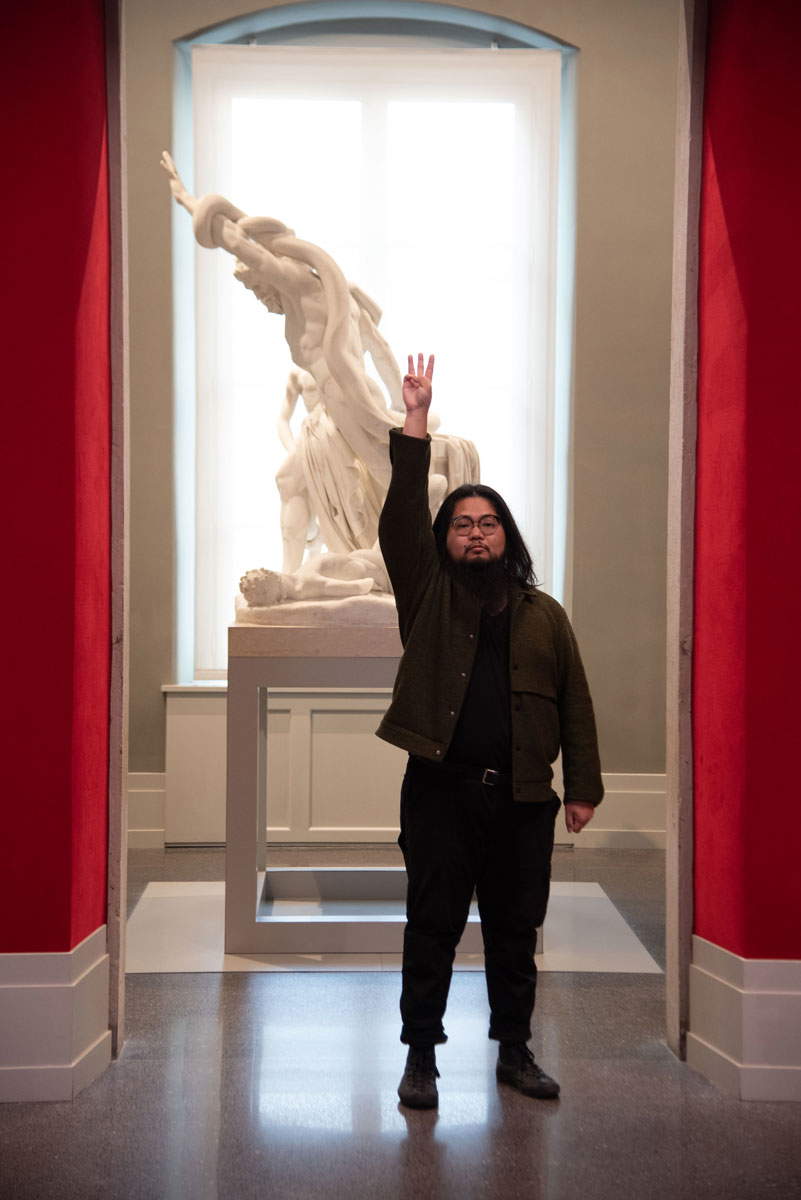
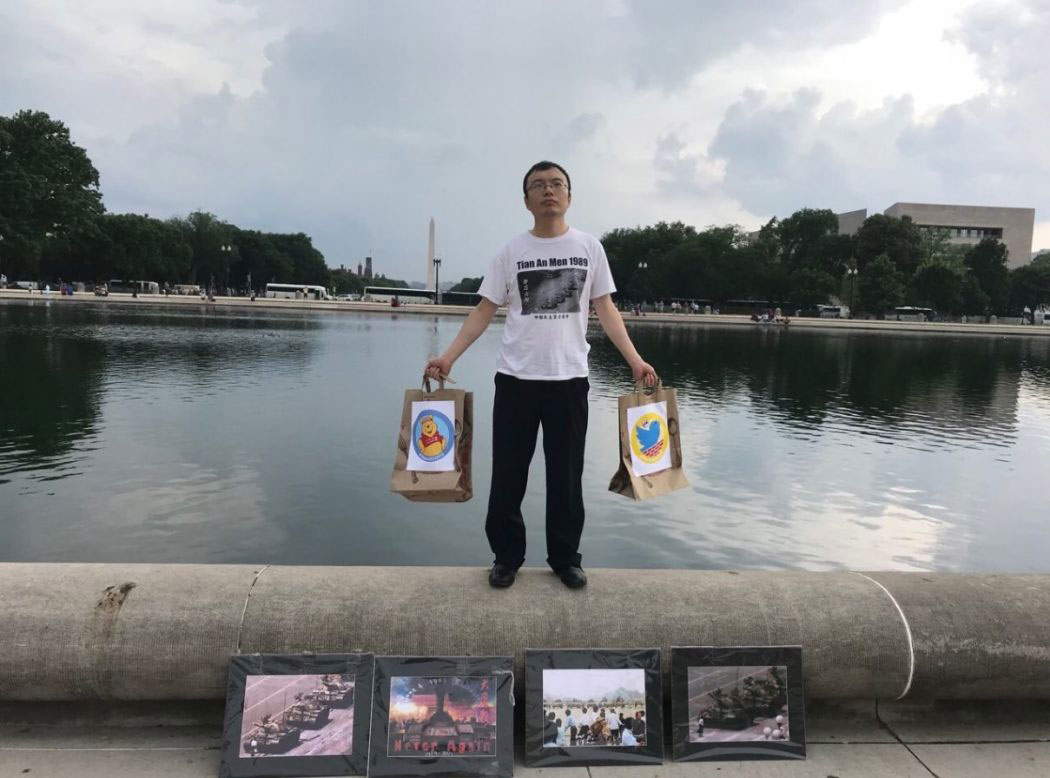

In order to begin and pursue his choice to become a political and dissident artist, he was then forced in 2009 to move to Australia, to Melbourne, where he still lives: he therefore began to execute, under the pseudonym Badiucao, his first satirical drawings, working at the same time as a childhood teacher for several years in order to support himself and continue his studies. Although he had moved to Australia, and thus was no longer resident on Chinese soil, he was aware of the risk he was exposing himself to by showing his identity: at public events he always showed up wearing a mask and always anonymously. His website biography reads: Badiucao “believes that history is constantly being unified and tampered with, and even forgotten, when freedom of speech and democracy are absent. His art is a record of his personal perspective on social issues to confront the official record. He believes that art and the Internet have the power to deconstruct the arrogance and authority of dictatorship as a building block for individual awakening and free independence.” He actually "uses his art to challenge censorship and dictatorship in China," using his Twitter account @badiucao. In fact, his message against the Chinese dictatorship is personally conveyed through the well-known social network, dealing with numerous social and political issues.
His works often refer to party propaganda, whose images are then reworked and manipulated by him, so as to make the characters and symbols of the institutions recognizable but at the same time spread a recontextualized message and especially in opposition to the regime. In the course of his work, he has made installations and performances: among the most significant ones is the performance made on June 4, 2016 to remember the Tank Man ("I choose art to resist, to fight terror and to remember. I once drew the Tank Man and I also have the Tank Man tattoo. I would like to see this form of remembering June 4 spread: it’s simple, calm and powerful."); the 2017 installation Meng (Dream) in which, through a mattress of four thousand hand-sharpened pencils mounted on the bed frame on which he slept during his exile in Australia, he evokes the agitated sleep of the activist artist; or the memorial poster for Liu Xiaobo, an activist and writer committed to defending human rights in his country and imprisoned because of his ideas, and the first Chinese to receive the Nobel Peace Prize as a resident of China. Upon learning the news of the prestigious award, the Chinese government reacted by censoring him and placing all members of his family under house arrest. Suffering from cancer, in his final hours and in prison, the Chinese authorities had made it clear that they would not allow Xiaobo to travel abroad for medical treatment.Badiucao then hung a poster and sign in Melbourne that read “Free Liu Xiaobo,” and even after the Nobel laureate’s death, the artist continued his Art for Liu Xiaobo campaign, calling on his supporters to take it global.
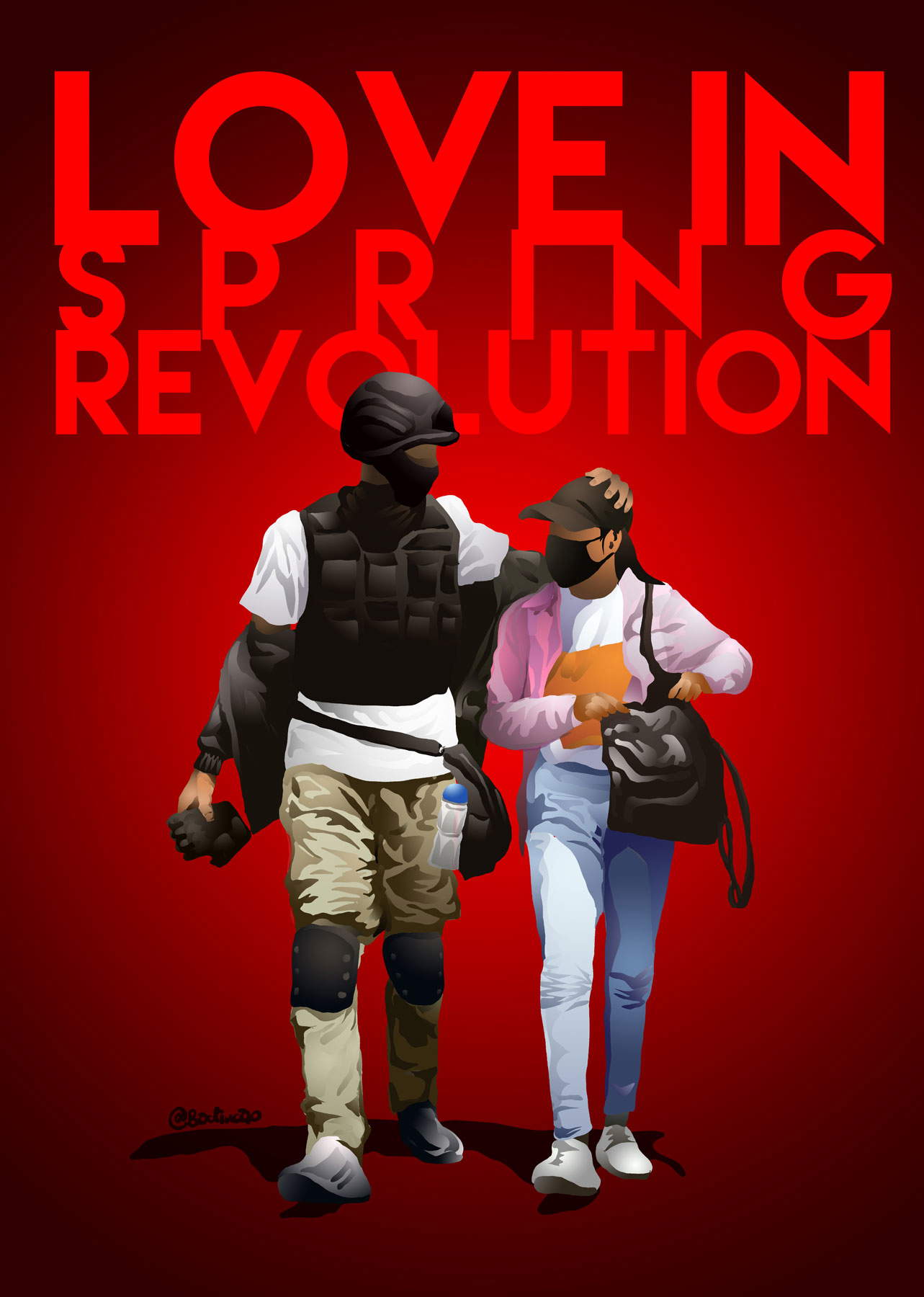
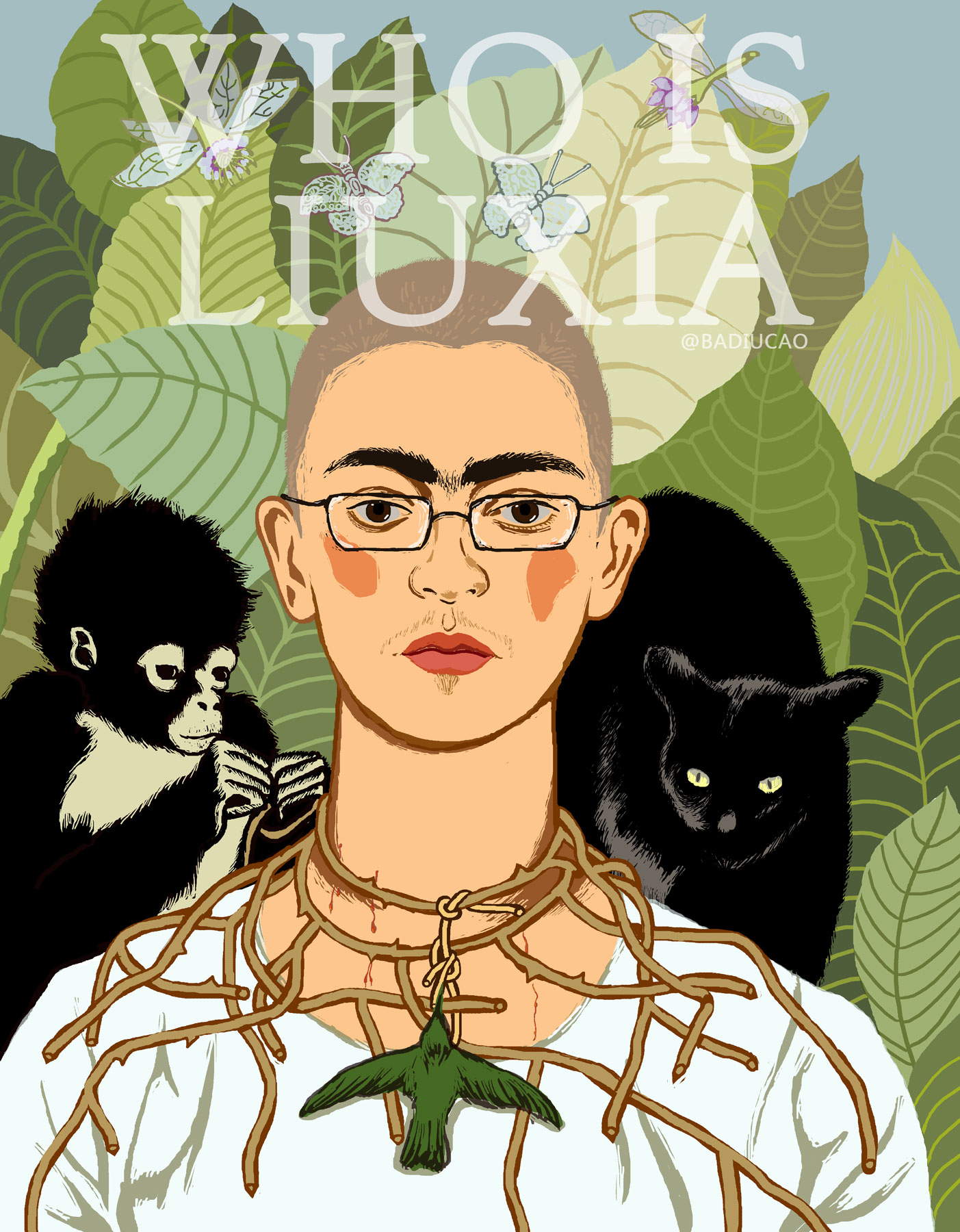
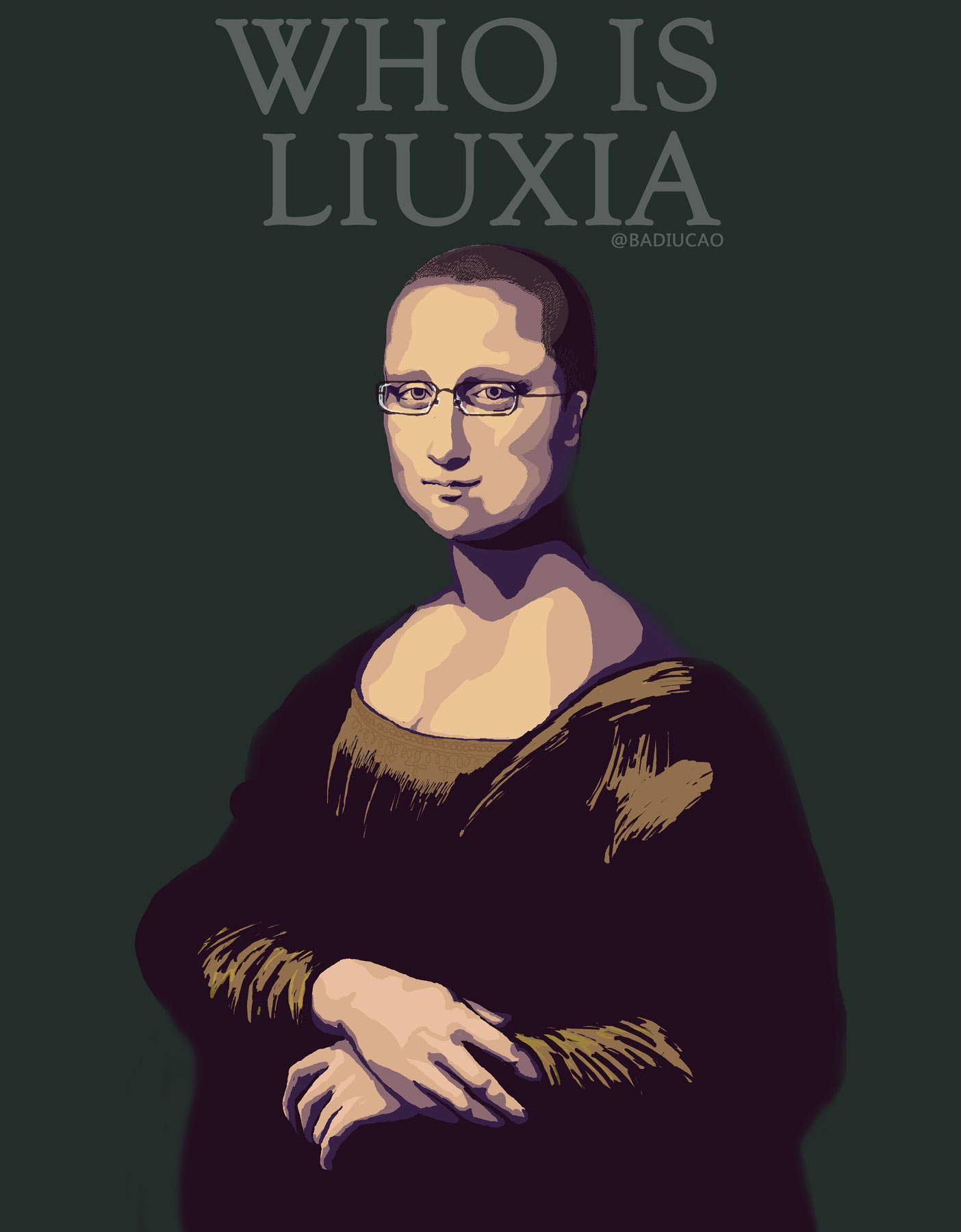
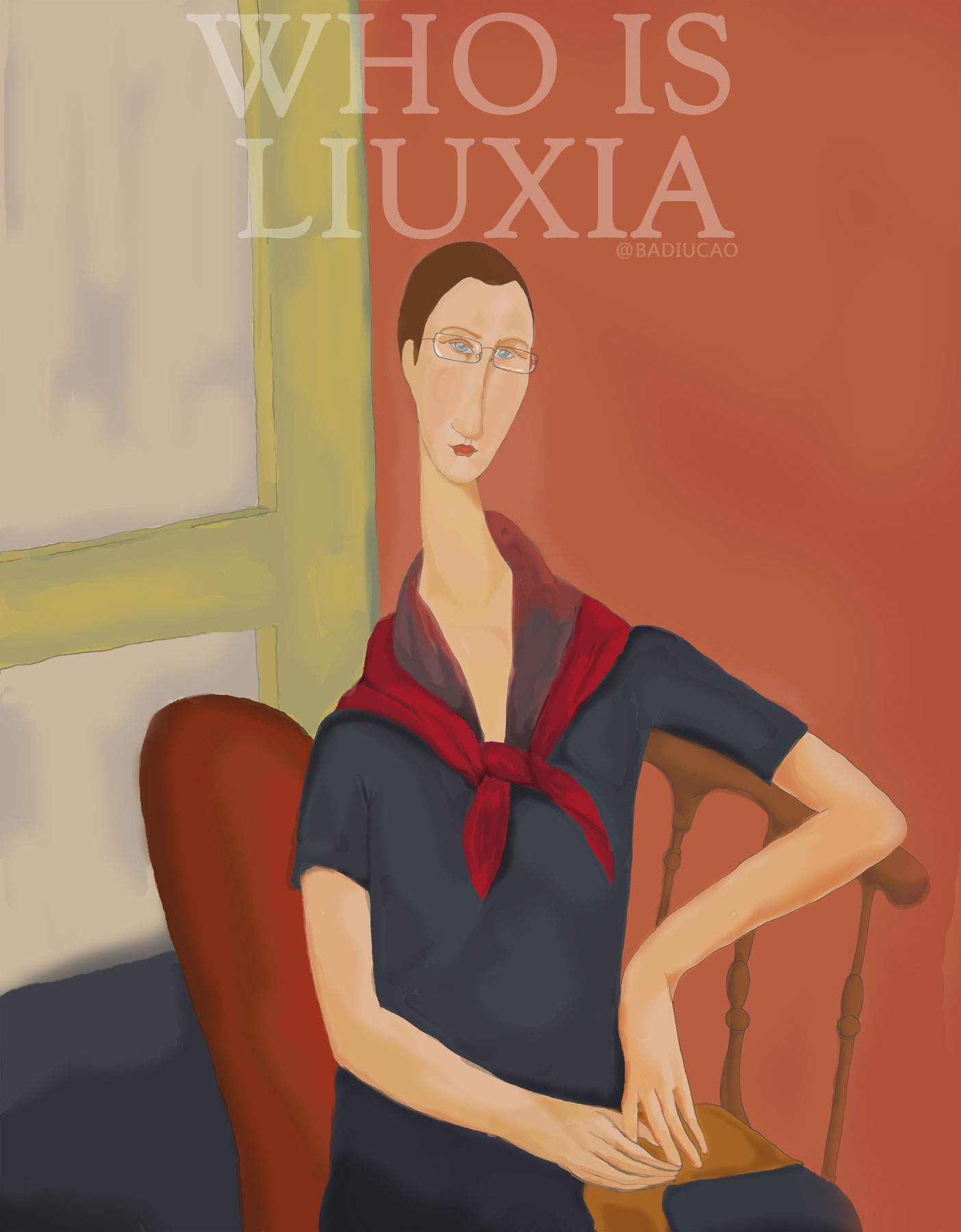

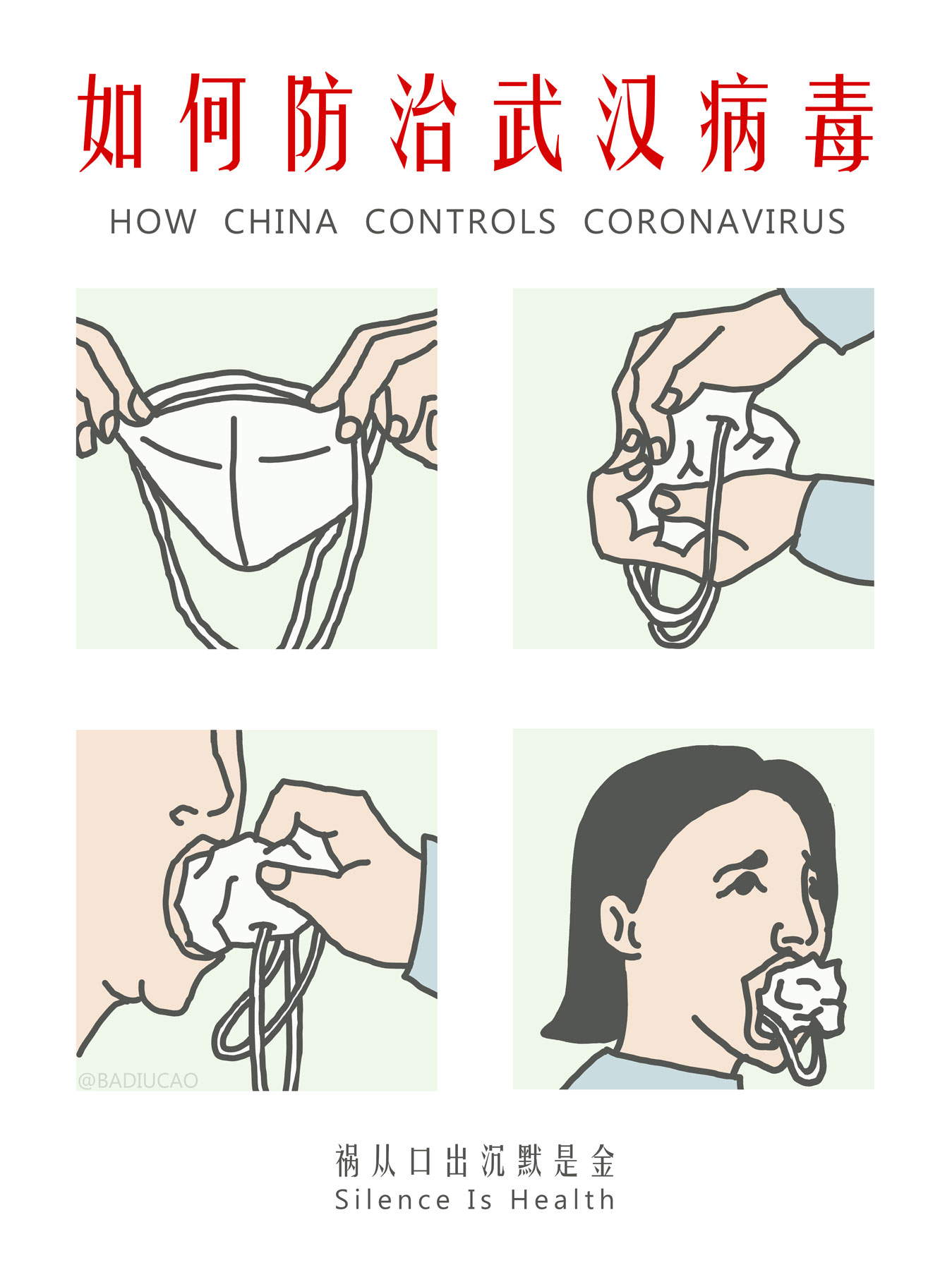
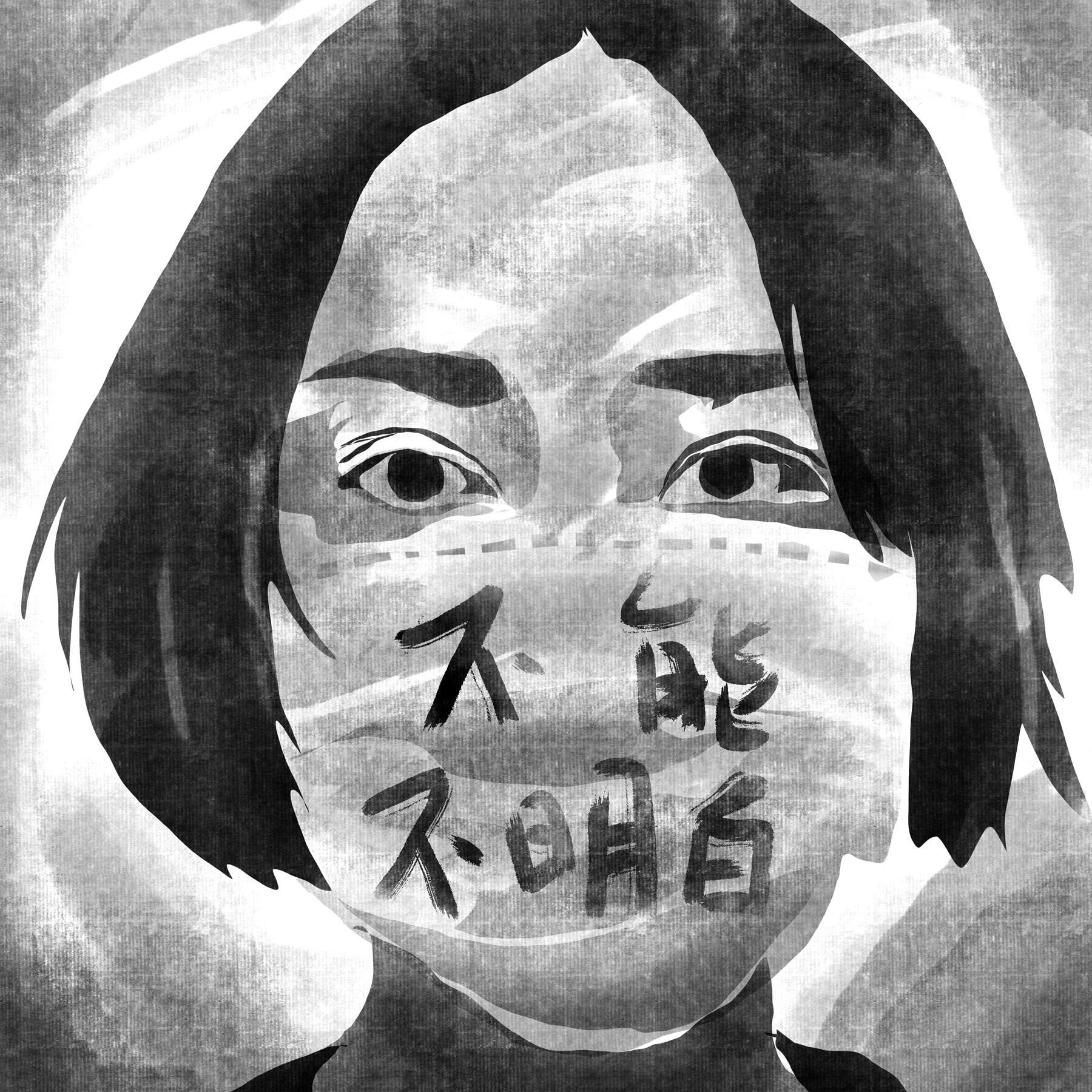

Badiucao has initiated several art campaigns dedicated to the Tank Man, Liu Xiaobo, the anniversary of the Tiananmen Square massacre, and in support of Hong Kong people fighting for the freedom of their city. He has been making political drawings and comics since 2013: world political figures, such as Donald Trump, cartoon characters such as Winnie the Pooh who was censored in China because his image was used as a mockery of Chinese President Xi Jinping or censorship-related scenes such as one in which a balled-up mask is stuffed into his mouth accompanied by the words “Silence is Health - How China controls Coronavirus” or the “No I Can’t, No I Don’t Understand” series of portraits with the mask. He then wrote Wuhan Diary on his blog, which became the only channel uncensored by Chinese government control to chronicle the lives of Wuhan residents in the first lockdown of 2020.
In 2018, he worked as an assistant for Ai Weiwei, a dissident Chinese artist who still pursues his civil engagement against censorship and all kinds of discrimination and has been arrested several times for his actions.
Badiucao chose not to reveal his identity until June 4, 2019, when he showed his face during the presentation of the documentary that chronicles his life, China’s Artful Dissident: he could no longer stand the threat to his family left in China. Her work has been used by Amnesty International, Freedom House, BBC, CNN, and China Digital Times and exhibited in Australia, America, and now for the first time in Italy at a solo exhibition at the Museo di Santa Giulia in Brescia(which did not escape the Chinese government) that can be visited until February 13, 2022. Thanks to his artistic and political activity, he received in Oslo on October 4, 2021, from the Human Rights Foundation the Vaclav Havel Prize for Creative Dissent, intended for artists who creatively denounce the deceptions of dictatorships. Like him who, through his comics almost always in shades of red and black, denounces the Chinese dictatorship.
Warning: the translation into English of the original Italian article was created using automatic tools. We undertake to review all articles, but we do not guarantee the total absence of inaccuracies in the translation due to the program. You can find the original by clicking on the ITA button. If you find any mistake,please contact us.